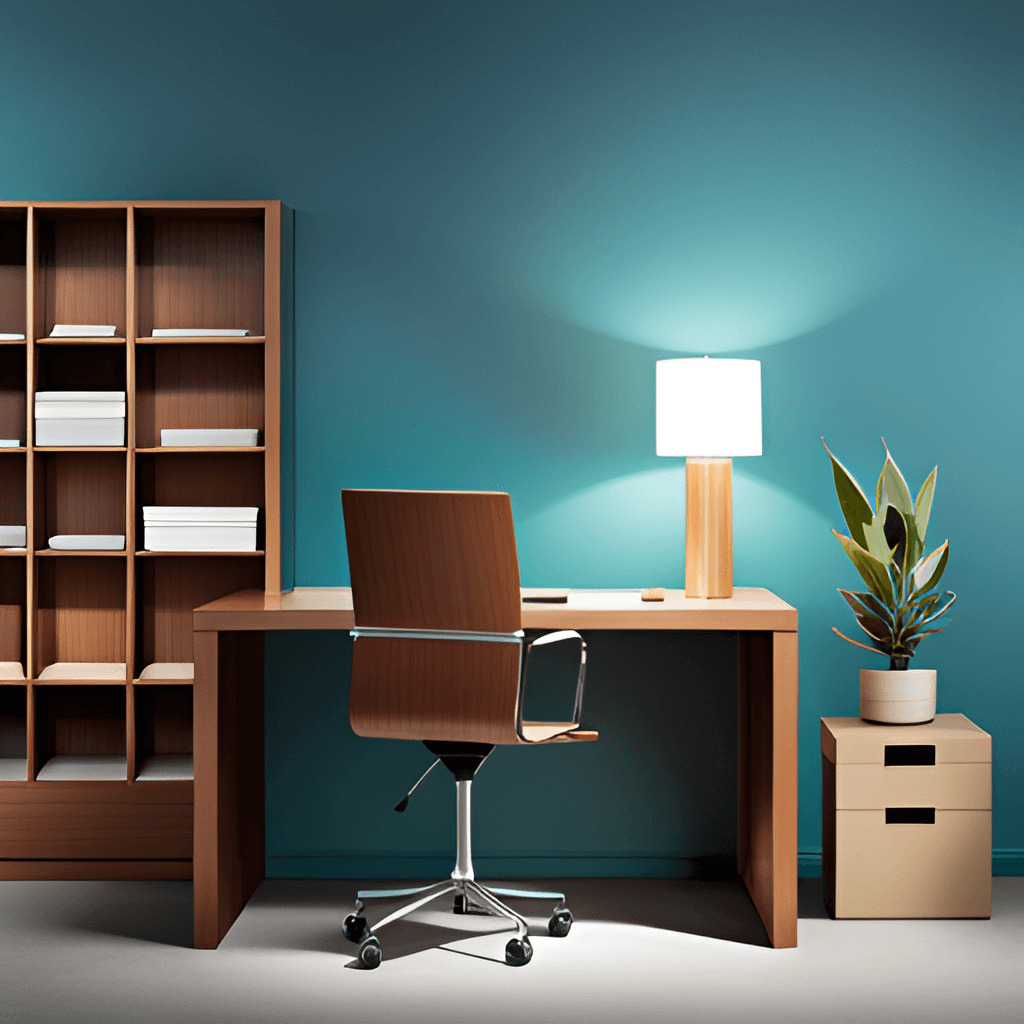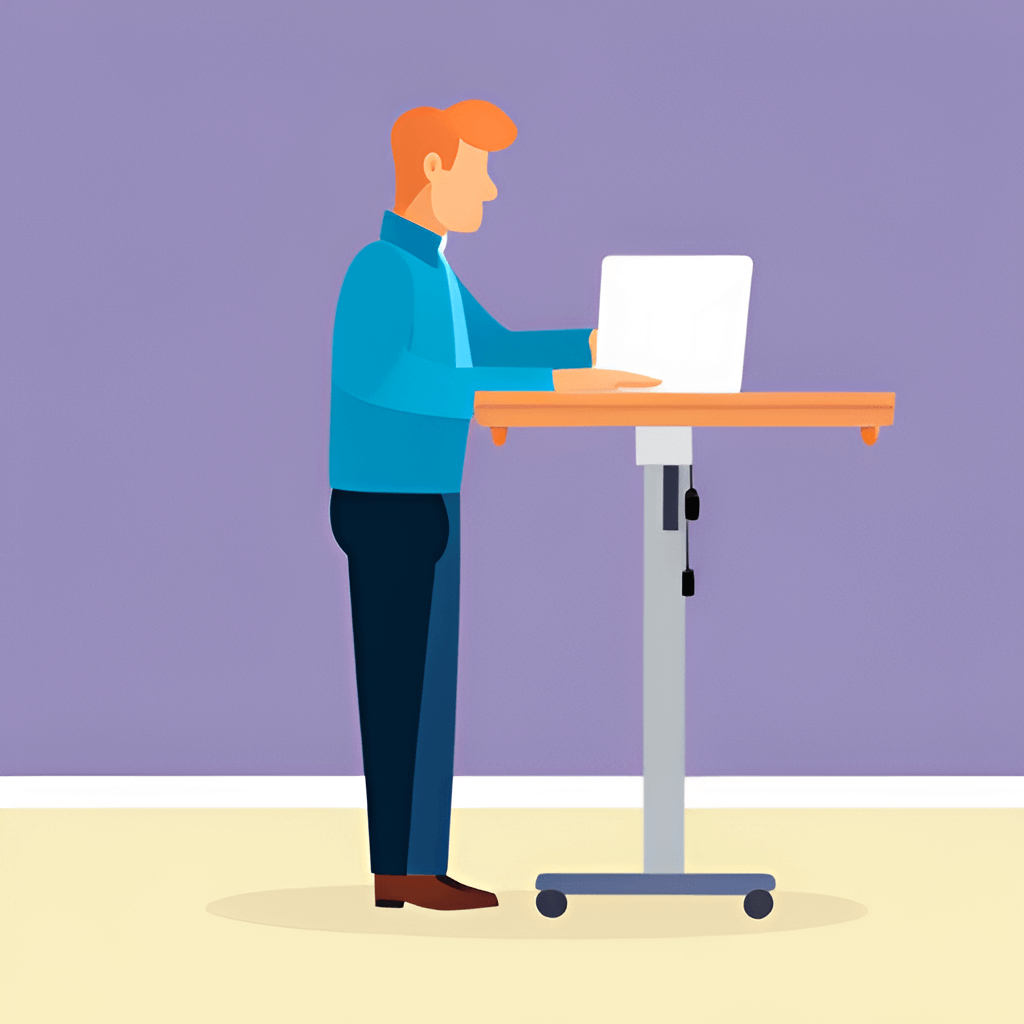
Standing Desk Adjustable vs. Traditional Desk: A Comprehensive Comparison
In the ever-evolving landscape of modern work, the choice of the right standing desk adjustable or traditional desk plays a pivotal role in determining our productivity and overall well-being. For those looking to invest in either a normal desk or a standing desk, the decision can be a substantial one. To help you make an informed choice, Opvital, your trusted source for all things related to work life and productivity, delves into the debate: “Standing Desk Adjustable vs. Traditional Desk: Which Wins for Work?”
The Rise of the Standing Desk
A Shift in Workspace Trends
In recent years, there has been a noticeable shift in workspace trends. The adjustable standing desk, once considered an avant-garde concept, has gained immense popularity. Why? Because it offers a change from the traditional seated work environment, providing potential benefits that are hard to ignore.

The Potential Benefits of Standing Desks
Standing desks have captured the attention of many due to their potential advantages. These include:
- Improved Posture: Standing desks can encourage better posture and reduce the risk of developing musculoskeletal issues often associated with prolonged sitting.
- Reduced Sedentary Behavior: Alternating between sitting and standing throughout the day can help combat the adverse effects of sitting for extended periods.
- Increased Energy Levels: Many users report feeling more alert and energetic while working at a stand-up desk, possibly due to increased blood flow and improved circulation.
Types of Standing Desks
There’s no one-size-fits-all when it comes to standing desks. You’ll find several options, including:
- Manually Adjustable Desks: These are operated by manually cranking or adjusting the desk height. They tend to be more budget-friendly.
- Electrically Adjustable Desks: These desks are powered by electric motors, allowing for easy and precise adjustments at the push of a button.
- Fixed-Height Desks: These adjustable height standing desks have a permanent height, and you can’t change them. They are generally more affordable but lack the flexibility of adjustable options.
Traditional Desks: Tried and True
The Enduring Appeal of Traditional Desks
While standing desks have their merits, traditional desks have an enduring appeal. They provide the familiar and comfortable seated workspaces we’ve been accustomed to for generations. They provide generally a more stable base for your work set up and are tested and true.
Ergonomics: The Key Consideration
The Importance of Ergonomics
Whether you opt for a stand-up desk or a traditional desk, ergonomics should be a top consideration. Ergonomically sound workspaces are crucial for long-term health and productivity.
Optimizing Your Workspace
- Desk Height: With standing desks, finding the correct desk height is vital to avoid strain. Your elbows should form a 90-degree angle when typing, and your screen should be at eye level. For traditional desks, ensure your chair and desk height are coordinated.
- Chair Selection: Choose a chair that provides proper lumbar support and allows you to maintain a neutral spine position.
- Monitor Positioning: Position your monitor at eye level to reduce neck strain. Use monitor stands if needed.
Productivity and Focus

The Impact on Productivity
Productivity is a primary concern when choosing a workspace. Let’s explore how both adjustable standing desks and traditional desks can affect your work efficiency.
Research Findings
Studies on the subject have produced mixed results. Some suggest that standing desks can enhance productivity due to increased alertness and movement, while others indicate that sitting can lead to improved focus on certain tasks. It’s clear that the impact varies from person to person.
Finding the Right Balance
Ultimately, the relationship between desk choice and productivity depends on individual preferences and tasks. Some people may thrive in a standing position, while others may require the comfort of a traditional desk to focus effectively.
Health and Well-Being
Health Benefits of Standing Desks
Standing desks have been associated with several health benefits, including:
- Reduced Back Pain: Many users report relief from chronic back pain and stiffness after transitioning to a stand-up desk.
- Improved Circulation: The act of standing encourages better blood flow throughout the body.
- Weight Management: Standing burns more calories than sitting, which can aid in weight management.
The Concerns of Prolonged Standing
However, it’s important to note that prolonged standing may also have drawbacks, such as increased pressure on the lower back and legs. Finding the right balance between sitting and standing is crucial to avoid potential health risks.
Cost Considerations
Analyzing Costs
Cost is a significant factor when choosing between a standing desk adjustable and a traditional desk. Let’s break it down:
Standing Desks
- Initial Purchase: Standing desks can have a higher upfront cost especially electrically adjustable models. Click on the link provided to see our extensive guide on affordable adjustable desks.
- Accessories: You may need to invest in accessories like anti-fatigue mats, monitor arms, and ergonomic chairs, which can add to the overall expense.
- Maintenance: Electric standing desks may require occasional maintenance or repairs.
Traditional Desks
- Initial Purchase: Traditional desks are often more budget-friendly, making them an attractive option for those on a tight budget.
- Accessories: While accessories can enhance ergonomics, they are not always a necessity with traditional desks.
- Maintenance: Traditional desks generally have fewer maintenance requirements.
The Value Proposition
Consider the value proposition of each desk type based on your budget and long-term needs. A standing desk may be a worthwhile investment if it aligns with your work habits and health goals, while a traditional desk can offer cost savings without sacrificing functionality.
Customization and Personal Preferences
Personalizing Your Workspace
Remember that personal preferences play a significant role in desk selection. What works for one person may not work for another. Take into account your:
- Work Habits: Do you prefer to stand for short periods or for the majority of the day?
- Body Type: Consider your height and comfort preferences.
- Tasks: Think about the nature of your work—do you need a stable surface for precise tasks or the flexibility to move around?
Conclusion
In the debate between standing desks and traditional desks, there is no one-size-fits-all answer. Your choice should be driven by a careful consideration of factors like ergonomics, productivity, health, and personal preferences. Opvital aims to empower you with the knowledge needed to make the right decision for your unique work life and productivity goals.
Remember, whether you opt for the modern appeal of a standing desk adjustable or the timeless comfort of a traditional desk, what truly matters is creating a workspace that supports your well-being and enhances your productivity.
FAQ’s
Standing desks can offer various benefits, but they may not be suitable for everyone. It’s crucial to consider your individual health and comfort. If you have existing musculoskeletal issues or medical conditions that affect your ability to stand for extended periods, consult with a healthcare professional before making a decision.
No, you don’t need to stand all day. The key advantage of a standing desk is the flexibility to alternate between sitting and standing throughout your workday. Finding the right balance that works for you is essential. Most experts recommend a mix of sitting and standing for optimal health and productivity.
Ergonomic accessories can significantly enhance the comfort of a traditional desk setup. Consider investing in an ergonomic chair with lumbar support, a keyboard tray to maintain proper wrist position, and a monitor stand to adjust the height of your screen. These additions can help create an ergonomic and comfortable workspace.
Yes, you can convert a traditional desk into a standing desk with the use of desk converters or risers. These devices sit on top of your existing desk and provide a platform for your computer and other accessories at standing height. It’s a cost-effective way to experience the benefits of a standing desk without replacing your entire workspace.
Additional Resources
Ergonomics and Health Benefits:
- Ergonomics and Health Benefits: Mayo Clinic – The benefits and risks of standing workstations
- Guidance for Height-Adjustable Desks: Berkeley HR – Guidance for Height-Adjustable Desks
- Health Benefits of Standing Desks: American College of Healthcare Sciences – Why We Choose Standing Desks
Read More
- Digital Marketing Tools: The Importance of Marketing Tools
 The Importance of Marketing Tools In today’s digital landscape, businesses …
The Importance of Marketing Tools In today’s digital landscape, businesses …Digital Marketing Tools: The Importance of Marketing Tools Read More »
- A Guide to Fundamental Marketing Tools for Businesses
 What are marketing tools? At Opvital, we’re dedicated to shedding …
What are marketing tools? At Opvital, we’re dedicated to shedding …A Guide to Fundamental Marketing Tools for Businesses Read More »
- The Significance of Marketing Tools
 Key Takeaways for Marketing Tools Marketing Tools Overview – Diverse …
Key Takeaways for Marketing Tools Marketing Tools Overview – Diverse … - A Comprehensive NeuronWriter Review: Unveiling Its SEO Powers
 Welcome to Opvital’s in depth NeuronWriter Review. NeuronWriter is more …
Welcome to Opvital’s in depth NeuronWriter Review. NeuronWriter is more …A Comprehensive NeuronWriter Review: Unveiling Its SEO Powers Read More »
